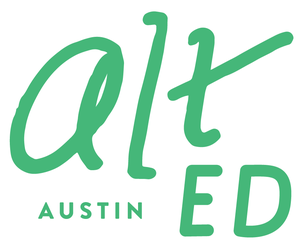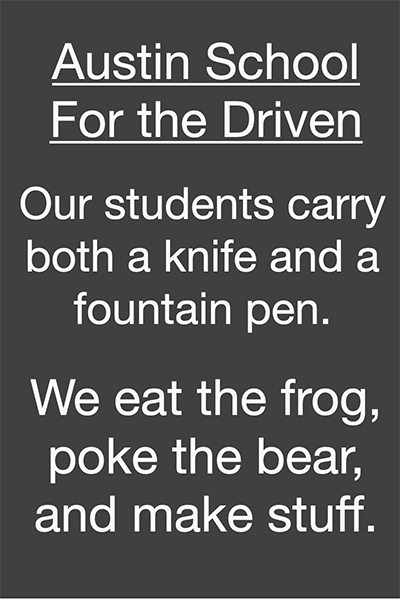Tools and tips for parents of teens with anxiety
/Guest contributor Courtney Harris is a child-centered and teen life coach. She supports teens and tweens in moving from anxiety and overwhelm to self-love and intentional self-expression. She also partners with parents to integrate new skills and improve communication and connection within the family. Courtney Harris Coaching offers 1:1 coaching sessions and Austin-area workshops and events; follow Courtney on Facebook to learn more.
In my nine years in the classroom and one year working with young people and families privately, I have come to hear the terms anxiety, social anxiety, and overwhelm more than I can count. Starting at very young ages, our children are internalizing patterns of overwork, perfectionism, and constant public performance. According to Psychology Today, 7 percent of the population in the United States is estimated to have some form of social anxiety within any given 12-month period.
Many of our children, especially those who identify as introverts, are highly sensitive, or have learning or developmental disabilities, do not feel supported by society. They feel that their way of being is not acceptable according to many social norms. The pressures to perform both inside and outside of the classroom are often too much to handle, particularly when the young people are not affirmed for the patterns and behaviors that are most natural and comfortable to them.
During this past year, I have been working with a 13-year-old who prefers face-to-face communication over social media, which feels isolating to him, given his friends’ heavy technology use. Yet he found it difficult to identify shared interests to relate over in person when he had those opportunities. All the while, he was managing and worrying about his honors courses, feeling exhausted by the workload, managing demands and expectations from his parents, and struggling to ask for help. Under the weight of these pressures from home, school, and social life, this teen was exhausted! He felt robotic, disempowered, and stuck in his life. Every Sunday was a source of anxiety for him, knowing the the cycle of overwhelm was starting anew. After months of watching him living this way, his parents saw that he needed to slow down; they recognized his need to feel secure and grounded and to develop new patterns for being his most authentic self.
If your child is already beginning to fear the pressures of the upcoming school year or is refusing attendance at a summer camp, rest assured that there are pathways to greater ease and peace for your child and your family. I’d love to share some of the big tips and tools that worked for this 13-year-old on his journey, especially when starting a new activity or semester.
Most of these are simply opportunities to think about your own thinking and share your process with your child. By telling them about how you think and problem solve, you can invite them to develop their own (not necessarily the same) processes.
- Show your tween/teen the planners, calendars, and time management techniques you use. Talk about how your system works, how you prioritize tasks, when you say “no” to things you can’t commit to (or don’t want to). Allow your child to choose the type of system they prefer.
- Create family routines around planning the week ahead. On a designated day, at a set time, stop to talk about the upcoming week. Discuss which activities bring a sense of joy and ease, and which activities bring up stress.
- When talking about upcoming activities or plans, you can share your inner dialogue about how you are preparing for the week. Describe what kind of things you need to do in order to be prepared for your meeting, or in order to have all of the meals cooked for the family, or in order to get the bills paid on time.
- Encourage your child to mentally prepare as well. Ask questions like, “What do you need to do in order to feel prepared for the test?” or “What do you need in order to feel safe on the first day of school?” Letting your child name their own needs will give them a source of power and control, which will motivate them to take action.
Outside of scheduling and planning, there is a great deal of metacognition you can share with your child to help them develop self-awareness.
- Talk about how anxiety feels in YOUR own experience. How does it show up in your body? Give qualities and descriptors to it. For example, do you get tense shoulders, a racing heart, shortness of breath, scattered thoughts, etc.? You also might consider giving your anxiety a number, using a 1–10 scale. In naming our anxiety, we can begin to understand that while it is something we experience, it does not define us. Over time, if you notice anxiety or tension in your child’s body, words, or behaviors, you can begin to ask them to notice what they observe or to rate their sensations. They will have the language for this through your modeling!
- Make time to talk about support systems and resources. Tell your child about those you go to for help. Whom do you seek advice from? Where do you get your information? Whom do you open up with? Tell them what this experience feels like. Ask your child whom they feel comfortable asking for help. Help them identify the people they can socialize with comfortably. Role-play situations in which they ask for help. The more your child practices this with you, the more prepared they will be to advocate for themselves as needed.
- Help your child generate a list of the top five topics they like to talk about with peers. Share the types of questions you like to be asked when meeting new people. Help them develop some go-to questions to ask new acquaintances and friends.
- Share with your child about the ways you incorporate peace and quiet into your life. Do you read for 20 minutes before bed? Do you do a crossword over coffee? Encourage your child to commit to time in their day for quiet and calm. Help them pick places they can go during the day to recharge or get away from the chaos of school life. Having routines that offer safety and security will enable your teen to feel more equipped and energized for the other activities that may be more draining.
The more often you and your child engage in conversation about the ways we perceive and process the world, the more self-aware they will be, and the more connected you will feel. While transitions may still be challenging in your family, the more intentional practice we have with approaching new opportunities with authenticity, the more confident and grounded our young people will feel.
Courtney Harris






















